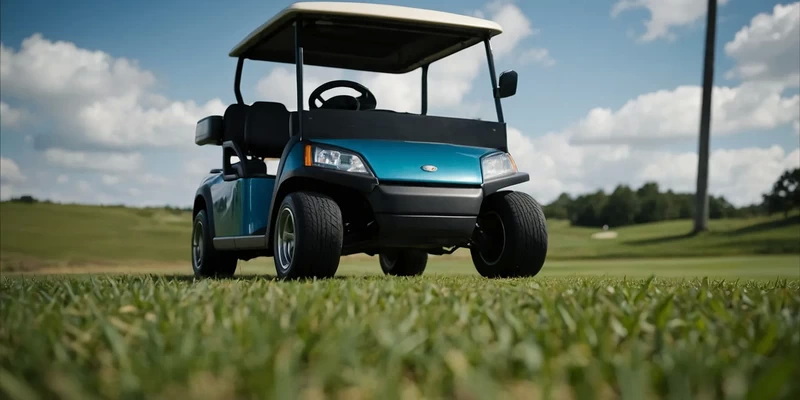Content Menu
● Understanding Electric Golf Cart Batteries
>> Lead-Acid Batteries
>> Lithium-Ion Batteries
● Can You Jump An Electric Golf Cart?
>> Risks of Jump-Starting an Electric Golf Cart
● Best Practices for Jump-Starting an Electric Golf Cart
>> Use Proper Equipment
>> Follow Safety Precautions
>> Steps to Safely Jump-Start an Electric Golf Cart
● Maintaining Your Golf Cart Battery
>> Regular Charging
>> Check Water Levels
>> Clean Battery Terminals
>> Monitor Battery Health
● Conclusion
● Related Questions
>> 1. What should I do if my electric golf cart won't start?
>> 2. How can I tell if my golf cart battery needs replacing?
>> 3. Can I use my car's jumper cables on my golf cart?
>> 4. How often should I charge my electric golf cart?
>> 5. What type of maintenance does an electric golf cart require?
Electric golf carts have become increasingly popular for their efficiency and eco-friendliness, especially in golf courses and residential communities. However, like any battery-operated vehicle, they can occasionally run into issues, particularly with their batteries. One common question among golf cart owners is whether you can jump-start an electric golf cart, similar to how you would jump-start a car. This article will explore the process of jump-starting an electric golf cart, the risks involved, and best practices for maintaining your golf cart's battery.

Understanding Electric Golf Cart Batteries
Electric golf carts typically use lead-acid batteries or lithium-ion batteries. Lead-acid batteries are more common and require regular maintenance, while lithium-ion batteries are becoming increasingly popular due to their longer lifespan and lower maintenance needs. Regardless of the type, understanding how these batteries work is crucial for troubleshooting and maintenance.
Lead-Acid Batteries
Lead-acid batteries consist of multiple cells that produce a nominal voltage of 2 volts each. They are connected in series to create a 36-volt or 48-volt system commonly found in electric golf carts. These batteries require regular watering and cleaning to prevent corrosion.
Lithium-Ion Batteries
Lithium-ion batteries offer several advantages over lead-acid batteries, including higher energy density, lighter weight, and longer life expectancy. They do not require watering and have built-in management systems to prevent overcharging.
Can You Jump An Electric Golf Cart?
Jump-starting an electric golf cart can be a bit different from jump-starting a traditional vehicle. While it is technically possible to jump-start an electric golf cart using another battery source, it is not recommended due to several risks involved.
Risks of Jump-Starting an Electric Golf Cart
- Voltage Compatibility: Electric golf carts operate at lower voltages than cars. Jumping from a car battery (which typically operates at 12 volts) can send too much voltage into the golf cart's electrical system, potentially damaging sensitive components.
- Battery Damage: The sudden influx of power can cause the lead-acid batteries in the golf cart to overheat or even explode if they are already compromised.
- Electrical System Damage: The electrical systems in electric golf carts are not designed to handle the high current from a car battery. This can lead to burnt-out fuses or damaged wiring.
- Safety Hazards: Attempting to jump-start a golf cart improperly can lead to sparks or fires, posing safety risks to you and your property.

Best Practices for Jump-Starting an Electric Golf Cart
If you find yourself in a situation where your electric golf cart won't start due to a dead battery, here are some best practices to follow:
Use Proper Equipment
Instead of using another vehicle's battery, consider using a portable jump starter designed specifically for electric vehicles. These devices provide the right amount of power without risking damage to your cart's electrical system.
Follow Safety Precautions
1. Wear Protective Gear: Always wear gloves and goggles when working with batteries.
2. Ensure Stability: Park the golf cart on a flat surface to prevent it from rolling during the jump-start process.
3. Turn Off Electronics: Switch off all lights and electronic devices in the cart before connecting jumper cables.
Steps to Safely Jump-Start an Electric Golf Cart
1. Connect Jumper Cables: Connect the positive (+) terminal of the jump starter to the positive terminal on the golf cart's battery.
2. Ground Connection: Connect the negative (-) terminal of the jump starter to a metal part of the golf cart's frame (not directly on the negative terminal) to avoid sparks near the battery.
3. Start the Golf Cart: Once everything is securely connected, turn on the jump starter and attempt to start the golf cart.
4. Disconnect Cables Safely: After starting, carefully disconnect the cables in reverse order—negative first, then positive.

Maintaining Your Golf Cart Battery
Regular maintenance is key to prolonging the life of your electric golf cart's battery. Here are some essential maintenance tips:
Regular Charging
Always charge your batteries after use, even if you only drove for a short distance. This helps prevent sulfation in lead-acid batteries and ensures they remain healthy.
Check Water Levels
For lead-acid batteries, regularly check and maintain water levels in each cell. Use distilled water only and ensure that water levels are appropriate before charging.
Clean Battery Terminals
Keep battery terminals clean from corrosion by using a mixture of baking soda and water. Ensure connections are tight but not overly tightened.
Monitor Battery Health
Use a voltmeter or multimeter to check battery voltage regularly. A healthy lead-acid battery should read around 12.5 volts when fully charged.
Conclusion
While it may be tempting to jump-start an electric golf cart using another vehicle's battery, it is not recommended due to potential risks such as electrical system damage and safety hazards. Instead, use appropriate equipment designed specifically for electric vehicles and follow safety precautions diligently. Regular maintenance of your golf cart's battery will also help prevent issues that may require jump-starting in the first place.

Related Questions
1. What should I do if my electric golf cart won't start?
- Check the battery connections for corrosion or looseness, ensure it is charged, and inspect fuses for any damage.
2. How can I tell if my golf cart battery needs replacing?
- If your battery consistently fails to hold a charge or shows significantly lower voltage readings than normal (below 12 volts), it may need replacement.
3. Can I use my car's jumper cables on my golf cart?
- It is not advisable as car jumper cables may deliver too much voltage for an electric golf cart's system.
4. How often should I charge my electric golf cart?
- Charge your electric golf cart after every use or at least once every few weeks if not used frequently.
5. What type of maintenance does an electric golf cart require?
- Regular charging, checking water levels (for lead-acid), cleaning terminals, inspecting connections, and monitoring overall performance are essential maintenance tasks.











































